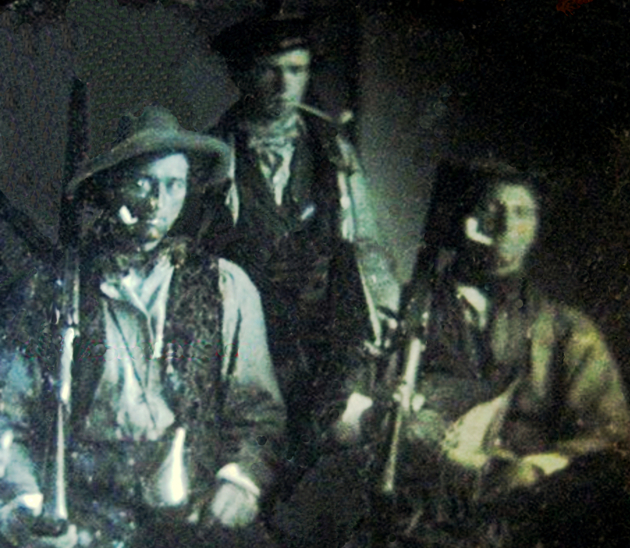|
|
|||||||
 |
 |
 |
 |
||||
|
|
|
|
|
|
|
||
|
A few years ago, I wrote an article on Rifles, Shotguns, and Knives in the Old West for my website that focused on weapons used by the
early Texas Rangers other than handguns. From his well-known book on early Texas Ranger history, Wilkins provided a description of rifles, shotguns, and knives of the early Rangers in his chapter entitled "Tools of the
Trade" (see reference at end of story). He noted that the only documented record he found of shotgun use was from an account on arms captured in an expedition into Texas by Mexican Brigadier General Adrian Woll
in 1842. In reports of battles at Salado and San Antonio, Woll reports he captured 165 rifles, 65 muskets, and twelve double-barreled muskets. Wilkins believes the latter were probably shotguns. He additionally
acknowledged that early Texas Rangers did use shotguns as indicated by requisition records he examined for buckshot. I included in my article a statement that in my review to date of photos of Texas Rangers, I had
seen photos of modern Rangers with shotguns but that I had yet to see an early picture of a Ranger with a shotgun.
Such statements often provide a challenge to readers, and I recently received an excellent response from Ronald Lah, aka Panther, who came across my article and statement. He sent me a photo file of a
daguerreotype showing the famed Texas Ranger Captain John "Jack" Coffee Hays and two of his men. Hays on the left and the man seated next to him both have double-barreled shotguns over their shoulders.
This daguerreotype is believed to be from the Mexican War Era (1846-1848) and would be consistent with the Texas Ranger career of the young Hays becoming a captain in 1841 at age 23. He later led his men
fighting alongside regular U.S. Army troops while scouting and defending supply lines during the Mexican War.
Panther's knowledge of early shotguns, in part due to his experience with Civil War and mountain man reenactment, clearly exceeds mine. For my article, he has supplied me with the following information about the
shotguns in the above photo.
"Not only does the man in the center of the photo have a double-barreled shotgun, it is certain that the man at the far left also has one. Note that the
forestock of his weapon looks like a shotgun stock. It has the long, slender profile and small end cap. More evidence is the back-action lock on his weapon, which in this country was usually found on shotguns and
rarely other long arms. Also, if the long weapon of the man at the left were a single-shot rifle the hammer would not be fully visible as it would appear on the other side as with the rifle of the man next to him. Finally,
the hammer is much wider and longer looking on the shotgun of the man at the far left again compared with the rifle being held by the Ranger next to him. It also engages the nipple further in, over the barrel (the shotgun
being held by the man in the center shows what I am talking about more clearly), whereas on the other pieces the nipple and drum are clearly mounted on the side of the lock."
In addition to a revolver, Rangers were required to have either a rifle or shotgun. Many chose a shotgun such as the 12 gauge double-barreled percussion shotgun on loan to the Texas Ranger Museum in Waco, TX and
on display during my visit there on July 29, 2018.
As always, I thank Panther and other readers of my website for helping me keep my articles current and accurate.
Note: An edited version of this story has been published in The Cowboy Chronicle, October 2020, pp.38-39.
Reference for article:
|
|||||||
|
|
|||||||
|
|
|||||||
|
|
|||||||


.jpg)
